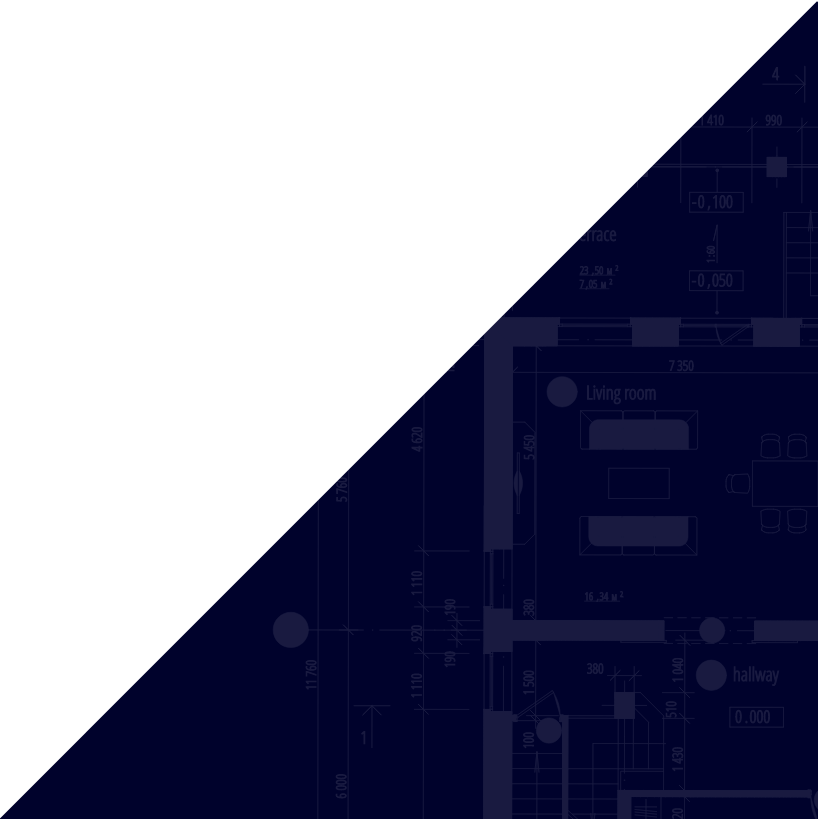Winter weather can cause flat roof snow damage that has severe consequences for the well-being of your commercial property. With the possibility of heavy snowfall and prolonged cold spells in areas like Colorado Springs, it’s essential to understand how to prevent flat roof snow damage from impacting your operations. By doing so, property owners and managers can implement strategies to maintain the integrity of their flat roofs and protect the investments underneath them.
Let’s explore the ins and outs of flat roof snow damage and measures property managers can take to protect their facilities.
Understanding Flat Roof Snow Damage
When we think of a flat roof, it’s easy to picture a completely horizontal plane. However, in construction, a flat roof has a slight slope to allow for water runoff—it is not truly “flat”. Flat roofs are favored for their aesthetic and practical applications, especially in commercial buildings. Yet, they have unique vulnerabilities, particularly when faced with the weight and persistence of accumulated snow.
Warning Signs of Flat Roof Snow Damage
Recognizing the warning signs of potential snow damage on your flat roof can help you take proactive measures to prevent serious issues. Being vigilant during and after heavy snowfall is critical to maintaining the integrity of your roof. Here are common signs you should look out for:
- Visual Indicators of Overstress: Look for visible changes, such as sagging in the roofline or cracks and splits in the roofing material. These can indicate that the weight of the snow is more than your roof can handle.
- Auditory Cues: If you hear creaking or popping sounds coming from the roof, it might be a sign that the structure is in distress. These noises can signal that the snow load is causing the roof to shift or buckle.
- Signs of Water Leakage: After a snowfall, look for evidence of water penetration or leaking inside the building. Wet spots, drips, or water stains on ceilings and walls can indicate that ice dams or the weight of the snow has compromised the roof membrane.
If you notice any of these warning signs, taking action quickly to assess and address any potential damage is crucial. Consulting with a professional is the best course of action to ensure the safety and longevity of your flat roof.
Uncovering the Causes of Flat Roof Snow Damage
Due to their low slope, flat roofs are particularly vulnerable to snow damage. Understanding the causes of this damage is essential for proper maintenance and prevention. Let’s examine the main factors contributing to snow damage on low-slope roofs.
Excessive Snow Load
The weight of accumulated snow can be too much for a flat roof’s structural integrity. Excessive snow load may cause the roof to sag or, in extreme cases, collapse. Knowing a roof’s snow load capacity is critical for safety and durability.
Material Deterioration
The freeze-thaw cycle can cause roofing materials to expand and contract, leading to cracks, splits, and overall degradation. This constant stress on the materials results in significant wear and tear over time, compromising the roof’s structural integrity and requiring frequent maintenance and repairs.
Temperature Fluctuations
Fluctuations in temperature can create cycles of thawing and refreezing, leading to ice damming on flat roofs. Ice dams prevent water from draining off the roof, causing it to pool and potentially seep into the building. This results in leaks and water damage, which is why proper insulation is an absolute must.
Poor Drainage Design
A well-designed drainage system is essential for the longevity of a flat roof. When drainage is poorly conceptualized, it can lead to water accumulation and damage. Proper drainage systems help avoid water pooling and the subsequent ice formation that can weaken a roof’s structure and cause leaks.
Property managers can deal with the root cause of water leaks with Tectum Roofing’s commercial roof inspection services.
10 Prevention Strategies for Minimizing Flat Roof Snow Damage
Protecting your flat roof from snow damage requires a combination of forward-thinking strategies and regular maintenance. By implementing the following measures, you can significantly reduce the risk of snow and ice-related damage during the winter months:
- Flat Roof Snow Removal: Have professionals remove snow accumulation using appropriate tools and snow melt, such as hydrochloride, to prevent excessive weight and ice dams.
- Professional RAM Programs: Utilizing RAM programs ensures regular inspections, maintenance, and timely snow removal, preventing damage on flat roofs by addressing vulnerabilities and ensuring effective drainage.
- Adequate Insulation and Ventilation: Ensure the roof has proper insulation and ventilation to maintain a consistent temperature and prevent ice buildup.
- Regular Maintenance: To keep the roof in good condition, perform routine maintenance, such as sealing cracks and reinforcing weak spots.
- Install Heating Cables: Use heating cables to melt snow and ice around critical areas like drains and edges to prevent ice dams.
- Reinforce Roof Structure: Strengthen the roof structure to support additional snow load, especially in areas prone to heavy snowfall.
- Proper Drainage: Ensure all drains, gutters, and downspouts are clear of debris to facilitate proper water flow and prevent standing water.
- Snow Guards and Barriers: Install snow guards and barriers to manage snow and ice movement, preventing sudden falls and accumulation in vulnerable areas.
- Install Waterproof Membranes: Use waterproof membranes to combat hydrostatic pressure caused by snow melt on a flat roof.
- Regular Inspections: Schedule inspections before and after winter to identify and address potential issues early.
By prioritizing these proactive protection measures, you can enhance the sealing and insulation of your roof, ultimately preserving its integrity throughout the coldest seasons.
Repair Solutions for Snow-Damaged Flat Roofs
Even with the proper precautions, flat roof snow damage can still occur. When dealing with flat roof snow damage, it is vital to promptly address any issues to prevent further degradation of the roofing material. Here are some immediate and long-term solutions you can consider to repair your snow-damaged flat roof effectively.
Immediate Actions to Take When Damage Is Detected
Time is of the essence when you identify any damage on your flat roof due to snow. Here are some immediate steps you should take:
- Inspect the roof for visible damage or depressions that indicate potential structural weakness.
- Clear excess snow from the roof surface, ensuring a balanced approach to avoid uneven load distribution.
- Contact professional roofing contractors to assess the damage and provide temporary solutions, such as patches or covers, to prevent water infiltration.
Long-Term Repair Options for Water and Leak Damages
After addressing immediate concerns, consider these long-term repair solutions to restore the integrity of your flat roof:
- Patch Repairs: Fixing small holes, cracks, and punctures in the roofing membrane
- Membrane Replacement: Replacing damaged sections of the roofing membrane
- Sealing Leaks: Applying sealant to areas where water is infiltrating
- Drain and Gutter Repairs: Clearing and repairing drains and gutters to ensure proper drainage
- Insulation Replacement: Replacing wet or damaged insulation to restore energy efficiency
- Flashings Repair: Repairing or replacing damaged flashing around edges, vents, and chimneys
- Ice Dam Removal: Removing ice dams and repairing any resulting damage
- Re-Leveling: Adjusting the slope or leveling the roof to improve water runoff
- Surface Recoating: Applying a new waterproof coating to protect against future damage
When to Consider a Complete Roof Overhaul
Sometimes, a repair is not enough to ensure the safety and longevity of your flat roof, especially if the snow damage is extensive. It might be time for a complete roof overhaul if:
- The cost of repairs approaches or exceeds the price of getting a new roof.
- The roof has aged beyond its expected lifespan and continues to suffer from recurrent problems.
- Inspections reveal that the structural integrity of the roof has been significantly compromised.
- Energy efficiency is a concern, and you wish to implement modern roofing technologies with better insulation properties.
Whether you need emergency commercial roof repairs or a complete roofing system replacement, Tectum Roofing is here to help.
Prevent Flat Roof Snow Damage With Tectum Roofing
At Tectum Roofing, we understand the significant negative impact that snow damage can have on your commercial flat roof. Our team is dedicated to offering routine roof inspections and implementing preventative measures to safeguard your property from the harsh effects of winter weather. Contact Tectum Roofing to provide the expertise and care needed to prevent flat roof snow damage, ensuring its durability and performance all year round.




